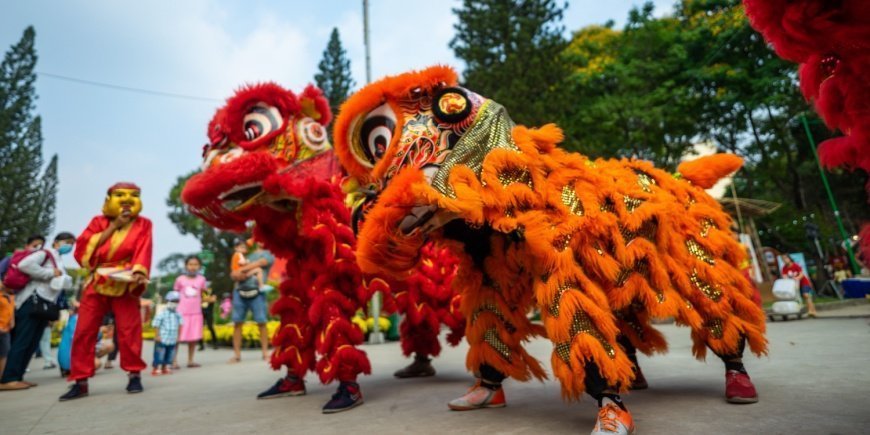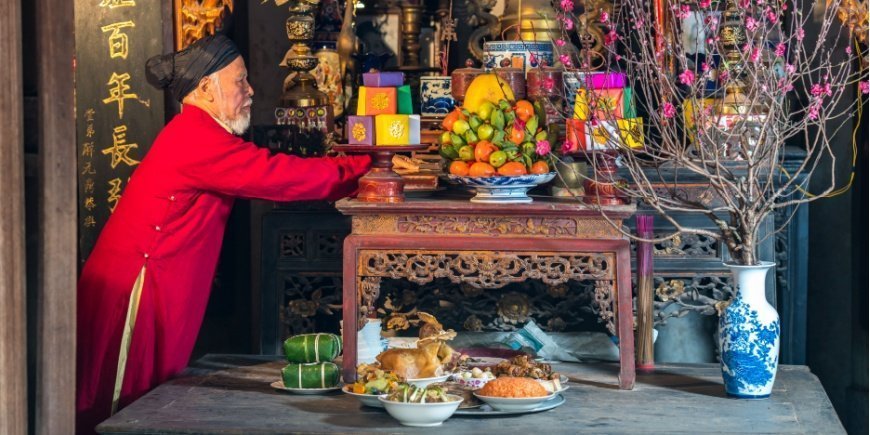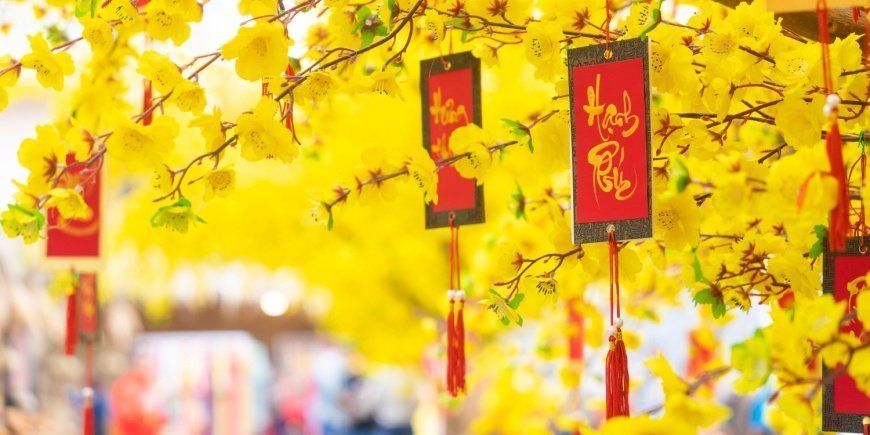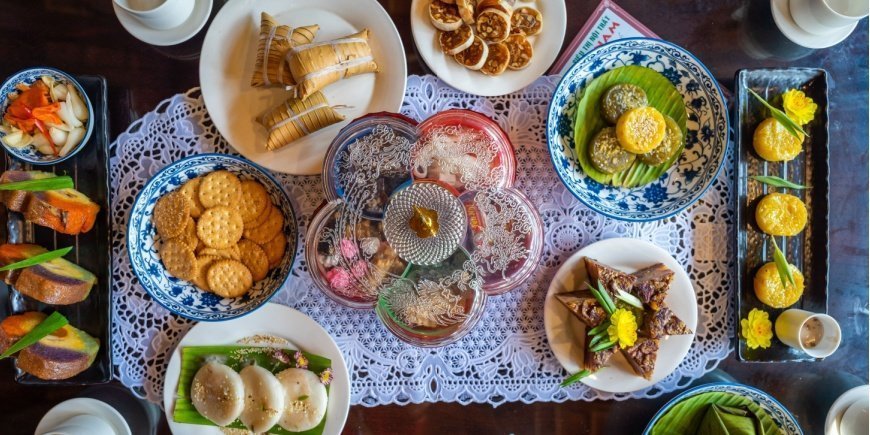The Vietnamese New Year
08.01.2019 | updated: 01.03.2024Colourful parades, fireworks shows, lavish holiday dinners and family get-togethers are some of the ingredients that make the Vietnamese New Year’s celebration what it is.
The Vietnamese New Year, Tet – as the New Year’s celebration is known, is in many ways a mix of our Christmas and New Year’s.
Vietnamese New Year is a festival of smiles, joy and the new.
When is the Vietnamese New Year?
The Vietnamese New Year is celebrated every year in either January or February.
The day of the celebration isn’t fixed, but is decided by the lunar calendar, the same applies to the Chinese New Year.
In 2025, the Vietnamese New Year starts on 29 January.
What is Tet?
The Vietnamese New Year is also known as Tet. Tet, whose full name is Tết Nguyên Đán, is seen as a new start each year.
Tet was originally held as a symbolic expression of gratitude to the gods for letting the spring sprout forth. Today, the most important thing during the festivities is to spend time with family and to show respect to one’s ancestors.
Preparations leading up to the Tet celebration
The Vietnamese carry out a long row of preparations before the big celebration can begin.
First and foremost, any misfortunes of the past year, must be cleared away. The old year’s misfortune is symbolically removed with a big cleaning – and the Vietnamese sometimes repaint their homes.
Aside from cleaning, both homes and the grave sites of ancestors are decorated. Vietnamese homes are decorated with colourful flowers, such as chrysanthemums, lavender, peach blossoms (ha dao), apricot blossoms (hoa mai), marigolds and kumquat trees, while grave sites are decorated with votive gifts, which are gifts to the gods, as well as various Vietnamese fruits.
The Vietnamese also make sure to pay off any debts they may have and put old conflicts behind them before the New Year’s celebration.
Before the lavish celebrations can begin, families gather from near and far, and this also means that the Vietnamese travel all across the country.
How is Tet celebrated?
The Tet celebrations primarily take place over three days to a week, while some of the traditions surrounding the New Year’s celebration last up to 9 days.
The first day of Tet
The first day is dedicated to family and prayer.
Families gather from near and far, enjoy a lavish dinner together and give each other gifts. Children of the family get red envelopes with money gifts from the family’s older members.
Children often wear new clothes in shades of red and gold, which symbolise wealth and good fortune.
After dinner, the Vietnamese pray for good fortune in the coming year. The Vietnamese also talk with close friends at this time.
Outside the festive walls of the home, a vibrant celebration takes place. Mua lan – also known as the lion dance – adorn Vietnam’s streets accompanied by drums, bells and gunpowder. Gunpowder is set off to scare off evil.
Other days of the Tet celebration
The next couple of days in the New Year’s celebration are held with parents-in-law and less close friends and relatives.
The New Year’s celebration continues with great food, and guests are treated to dried fruit, prepared on the table in a delicately adorned box, and tea, when they stop by.
Festivities with food and drink are also mixed in with more spiritual activities. The Vietnamese visit Buddhist temples and make donations, receiving certainty of their fortune in return.
The symbol of the conclusion of the New Year’s celebration after the week is a fascinating dragon parade.
TourCompass – From tourist to traveller
-
General Info
Receive all the latest news and offers delivered to your inbox!
Registered in England.
Registered Office:
Nucleus House 2
Lower Mortlake Road
Richmond, TW9 2JA
Company no.: 11454726

E-mail: info@tourcompass.co.uk
ATOL protected no. 10558.
ABTA member no. Y6104.
Read more.



